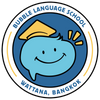Image: https://deltalogix.blog/en/2024/04/10/learning-and-generative-ai-how-technologies-will-change-teaching/
Video is already one of the most engaging formats for education. But in 2025, Video Generative AI (Video GenAI) is accelerating possibilities — enabling teachers to create customized, dynamic video content quickly, and giving students richer visual experiences. A recent academic study explores teachers’ perspectives on video GenAI and its potential in K–12 classrooms.
Let’s explore what video generative AI can do, how teachers are reacting, and how it might transform classrooms soon.
🎬 What Is Video Generative AI?
Video Generative AI refers to systems that can produce or transform video content from prompts, scripts, or existing material. For example:
-
Turning a written lesson plan into video scenes
-
Animating diagrams, historical reconstructions, or simulations
-
Auto‑generating short explainer videos or recaps
-
Adapting video style to student level (simpler visuals for beginners, more advanced for deeper learners)
In short: it lowers the barrier for producing and customizing video content at scale.
🧑🏫 What Teachers Think (from the Study)
The study surveyed K–12 teachers using frameworks like TPACK (how content, pedagogy, and tech integrate) and TAM (technology acceptance).
Opportunities teachers saw:
-
Increased engagement: visually rich lessons can captivate students
-
Efficiency: less time spent producing videos manually
-
Personalization: tailoring videos to class level, pace, or interests
-
Authentic visual aids: making abstract or complex topics more graspable
Challenges or concerns they raised:
-
Technical limitations: generation mistakes, unrealistic visuals, or lack of control
-
Ethics & authenticity: concerns about misleading content or over‑automation
-
Training & infrastructure: schools need teacher training, good internet, devices
-
Integration: ensuring the AI videos align with pedagogy and curriculum
📈 Why It Matters Now
-
Scalability: Teachers everywhere can generate lesson visuals without needing an entire media team.
-
Access & Equity: Schools with limited resources can use GenAI to enhance quality of instruction.
-
Differentiated Learning: Students can receive video content suited to their pace, visual style, or background.
-
Future Skills: As students interact with AI media, learning to critically evaluate AI‑generated content becomes a digital literacy skill.
🛠 How to Begin Using Video GenAI in Classrooms
If you’re a teacher, school, or parent interested in leveraging this trend, here’s how to start:
-
Try small projects: generate a short video supplement (e.g., timeline, concept illustration)
-
Use prompts & feedback: refine AI output by giving better prompts and editing
-
Blend AI videos with human touch: add commentary, discussion, reflection
-
Train teachers: offer workshops on prompt design, video editing, and ethical use
-
Monitor & review: always check AI output for accuracy, bias, clarity
🌟 Final Thought
Video generative AI won’t replace teachers — it supports them. As visual storytelling becomes easier to produce, learning can become more vivid, adaptive, and expressive. In 2025, classrooms that harness AI to amplify, not replace, human creativity and interaction will stand out.
Reference:
https://arxiv.org/abs/2503.08003

